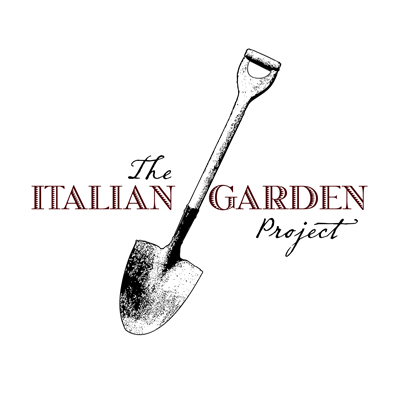Our Website: A Harvest of Italian American Heritage
Maybe it’s because I had loving immigrant grandparents on both my mother’s and father’s sides of the family and I grew up thinking that all grandparents spoke with an accent and gardened and cooked continually and that food was the center of everything. Maybe that’s why now, I’d rather spend my days helping my 93 year-old friend, Mr. Ciccone make wine or can tomatoes, and the more time I spend with folks like him and Marietta Macchione and Tommasina Floro, the more I want to be with them and want to learn from them. It’s not just because of my nostalgia for what I knew growing up though. Maybe that’s what drew me to them in the first place, but now it’s because I realize how amazing these folks are and the more I get to know them, the more incredible they seem. When I’m with them, I can’t help but think that everyone should get to see what I see, everyone should learn the things that they know.
Many of the gardeners are my friends and neighbors and I stop by on a daily basis. It is those daily visits that reveal how all-encompassing their lifestyle of gardening, food, cooking and self-sufficiency is. Almost everyday something is being planted, harvested, or preserved. Every visit is a learning experience with something ripening on a windowsill or hanging to dry to save for seed. The closer I look and the more I learn, the more I realize how much more there is to know. A visit to Tommasina’s house finds her harvesting zucchini blossoms, but how does she know which flowers to harvest so that the plant will continue to produce zucchini, and oh, she only harvests them early in the morning? How does she wash and store them? And her zucchini grow so well, where does she get the seed and when does she plant them?
And it doesn’t end when the traditional gardening season ends. It’s a whole lifestyle. In October Marietta is harvesting “scarola” (escarole) and planting rapini. Tommasina is curing olives and Michele is foraging for wild mushrooms. Mr. Ciccone is making wine and my father is planting garlic. There may be snow on the garden in January, but when it’s time to make the sopresatta, out comes the fennel that’s been hanging to dry since summer and into the ground pork it goes, along with the sweet peppers that were canned or frozen from last season’s harvest.
Now, through this website, you’ll be able to share in this lifestyle. We have countless hours of footage and thousands of photos. We’ve collected recipes and gardening know-how, not only from friends and neighbors, but from the friends we’ve made throughout Pittsburgh, Cleveland, Brooklyn and the Bronx and we’re continually visiting new gardens and meeting new gardening friends in cities across the US. You’ll come along on our visits with friends and family in the Old Country too because you can take the gardener out of Italy, but you can’t take Italy out of the gardener. You’ll see where the traditions originated and learn why and how they came about.
We want you to be a part of The Italian Garden Project™ too. You’ll soon have the opportunity to tell us your stories and share with us your memories. There’s something about the garden and their gardeners that’s left lasting impressions on us and we want to preserve your memories of them.
Do you know of an existing classic Italian American vegetable garden that you’d like to see documented? Let us know about it. We’ll be traveling across the US, seeking out these great gardens to make sure their secrets are not lost.
We want to hear from you. We want to know what you like and want to see more of, what needs to be clarified or elaborated upon, whether you tested a gardening tip or tried a recipe. Be a part of the Project and join us as we shine a much deserved light on the Italian American gardener and a lifestyle that speaks to the past as well as the present.

